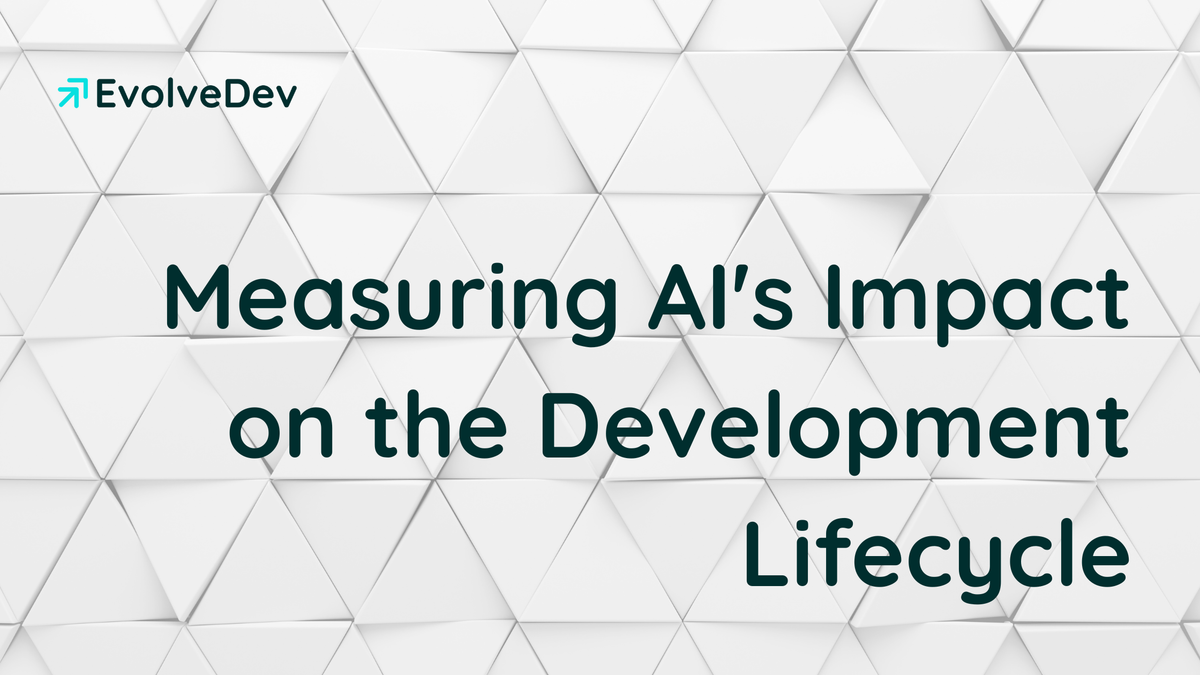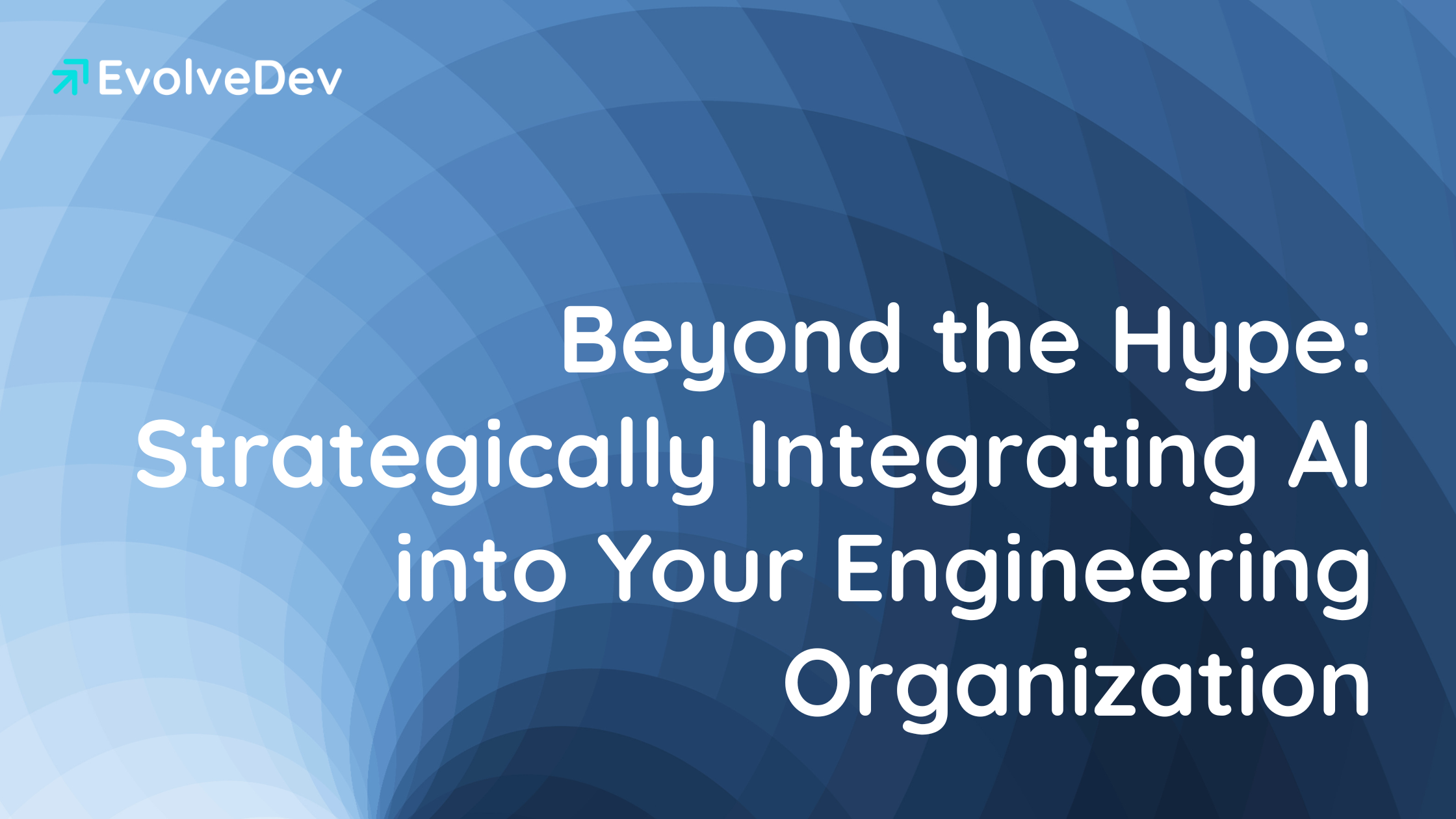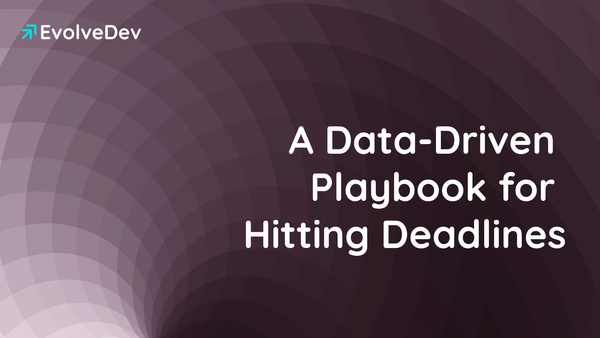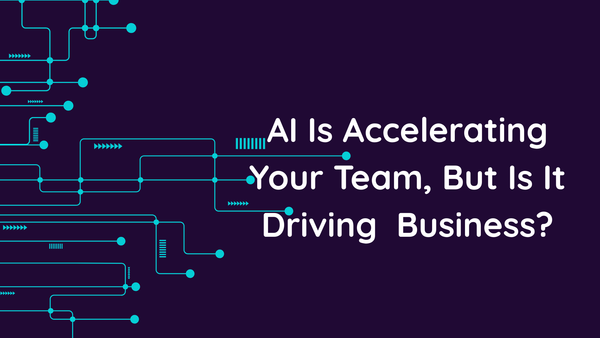Measuring the Unseen Hand: Quantifying AI's Impact on the Development Lifecycle

Remember that feeling when a new tool promised to change everything, only to leave you wondering if it actually made a difference? That's often the quiet concern swirling around the integration of Artificial Intelligence (AI) into our software development lifecycle (SDLC). AI is no longer a futuristic concept; it's rapidly becoming an indispensable co-pilot, from intelligent code completion to automated testing. But as leaders, we're not just looking for cool tech; we're looking for real, measurable impact. How do we truly gauge AI usage and, more importantly, its tangible effects on our teams, our products, and our bottom line?
The Rise of AI in SDLC: A Paradigm Shift
AI tools are weaving themselves into every stage of the SDLC, offering a range of benefits that touch every developer's daily work:
- Planning & Requirements: AI helps predict requirements, estimate timelines, and identify risks. Tools like Jira with AI plugins (e.g., BigPicture, Elements.ai) or Microsoft Project AI assist with task automation and scheduling.
- Design & Architecture: AI suggests design alternatives and optimizes architectures, with tools analyzing components and proposing best practices.
- Coding & Development: Generative AI tools like GitHub Copilot, Cursor, or ChatGPT accelerate code writing, suggest improvements, and handle repetitive tasks.
- Testing & Quality Assurance: AI-powered tools automatically create and execute test cases, analyze results, and predict bugs. Platforms like Testim offer automated, self-healing tests.
- Deployment & Operations (DevOps): AI enhances CI/CD pipelines, monitors deployments, predicts issues, and automates rollbacks. Tools like Harness and Jenkins with AI plugins streamline these processes.
- Maintenance & Monitoring: AI constantly watches over applications, analyzing performance and logs to identify bottlenecks and suggest fixes. Datadog provides performance insights, and PagerDuty prioritizes alerts.
While the potential is vast, simply adopting AI tools isn't enough. To truly leverage their power and ensure they're a help, not a hindrance, we need to measure their impact effectively.
Key Metrics for Measuring AI Usage and Its Effects
Measuring AI's impact requires a multi-faceted approach, combining quantitative data with qualitative insights from your team. Here are some crucial metrics to consider, broken down into areas that directly affect your operations and your people:
- AI Tool Adoption & Engagement:
- User Adoption Rate: What percentage of your developers are actually using the AI tools? This tells you if the investment is even getting off the ground.
- Feature Usage Frequency: Are they just using basic autocomplete, or are they diving into more advanced features like test case generation? This reveals how deeply integrated the AI is.
- AI-Generated Code Acceptance Rate: When the AI suggests code, how often is it accepted and committed? A high rate indicates the AI's suggestions are relevant and high-quality, saving real time.
- AI-Assisted PR Contribution: This metric helps you understand how much of the work in Pull Requests (PRs) is being handled by AI. This includes tracking the percentage of PRs created by AI, the number of AI-generated review comments, and the number of PR's reviewed by AI.
- Development Efficiency & Throughput:
- Cycle Time Reduction: This is about speed. How much faster are features moving from idea to production? This includes "Lead Time for Changes" (code commit to deployment) and "Issue Cycle Time" (issue creation to completion).
- Deployment Frequency: Are you releasing code more often? Increased deployments often mean faster iteration and quicker value delivery.
- Reduced Manual Effort: How much time are developers saving on tedious, repetitive tasks like writing boilerplate code or initial documentation drafts? This frees them for more creative work.
- Software Quality & Reliability:
- Defect Density: Are you seeing fewer bugs in your code per line? AI can help catch issues earlier.
- Change Failure Rate: Are fewer deployments causing problems in production? A lower rate means more stable releases.
- Mean Time to Recovery (MTTR): If an incident does occur, how quickly are you recovering? AI can accelerate diagnosis and resolution.
- Developer Experience (DevEx):
- Developer Satisfaction Surveys: Are your developers happier, less stressed, and feeling more productive with AI? Their perception is invaluable.
- Reduced Overwork/Burnout: Is AI genuinely helping reduce the burden of mundane tasks, contributing to a healthier work-life balance for your team?
Strategies for Effective Measurement
To overcome these challenges and truly embrace AI as a partner, consider these strategies:
- A/B Testing (Where Possible): If you can, compare teams or individuals using AI tools against those not, for specific tasks.
- Define Clear Objectives: Before you even start, know what success looks like for your AI adoption. What problems are you trying to solve?
- Integrate Data Sources: Pull data from all your SDLC tools – Jira, Git, CI/CD pipelines, testing frameworks – to get a unified, comprehensive view.
- Regular Monitoring and Reporting: Keep a close eye on your metrics. Trends, not just snapshots, tell the real story.
- Qualitative Feedback Loops: Don't just rely on numbers. Talk to your developers! Their experiences and insights are invaluable.
- Focus on Business Outcomes: Remember, AI is a tool to achieve business goals. Link your AI metrics to faster time-to-market, higher quality products, and happier teams.
Ultimately, the journey with AI in software development is about more than just technology; it's about empowering your people to build the future, one intelligent line of code at a time. We believe in a future where every development team can clearly see the impact of their innovations.
AI in Engineering series

You are here
Building robust AI measurement in-house is a significant undertaking. evolvedev.io, provides the deep insights needed. Track AI adoption, measure its impact on efficiency and quality, and make data-driven decisions to propel your development efforts.






